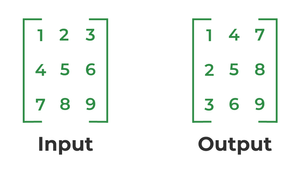Series: Data Structures and Algorithms
Type: Dynamic Array
DS: Binary Search Tree
Code: Google Collab Notebook
Introduction
In the world of Data Structures and Algorithms (DSA), Binary Search is a highly efficient method for locating specific elements within sorted arrays. This algorithm is not just a tool; it's a fundamental concept every programmer encounters, especially when dealing with sorted data. The essence of Binary Search lies in its ability to significantly reduce the search space, making it a preferred choice in numerous applications.
Binary Search: A Targeted Approach
Consider a scenario where you have a sorted array of integers and need to find whether a target integer exists in this array. More importantly, if the target is present, you must determine its index. This is a classic use case for Binary Search. The algorithm efficiently narrows the search space by repeatedly dividing the array in half and comparing the target with the middle element of the current search space.
For example, let's take an array [0, 1, 21, 33, 45, 45, 61, 71, 72, 73] and a target value of 33. Binary Search starts by examining the middle of the array. If the middle element is not the target, it decides whether to continue the search in the left or right half of the array, depending on whether the target is smaller or larger than the middle element. This process is recursive until the target is found or the search space is exhausted. In our example, Binary Search would successfully locate the target 33 at index 3.
Binary Search Trees: Extending the Principle
While Binary Search is an algorithm specifically designed for sorted arrays, its principles are foundational to more complex structures like Binary Search Trees (BSTs). A BST is a tree data structure where each node has up to two children, and they are organized in a way that allows for efficient retrieval, insertion, and deletion of data. The search process in a BST is akin to binary search but is applied to a hierarchical structure, making it suitable for dynamic data sets where data is continuously added or removed.
The Role of Recursion in Binary Search
Recursion plays a pivotal role in implementing Binary Search. The algorithm simplifies the problem with each recursive call by halving the search space, making the process efficient and straightforward. This recursive approach gives Binary Search its power, allowing it to quickly zero in on the target element or determine its absence in the array.
In summary, Binary Search is a fundamental algorithm in DSA that efficiently searches through sorted arrays. Its application, coupled with the concept of recursion, makes it a powerful tool for solving problems that require searching for specific elements in an ordered list. Understanding Binary Search is not just about learning an algorithm; it's about embracing a methodology for problem-solving in computer science.
The series will cover a broad range of questions from Easy-Hard difficulty and will have helpful interview tips throughout the posts.
You don't have full access to this post on Amitk.io at the moment.
Subscribe nowAlready have an account? Sign in



